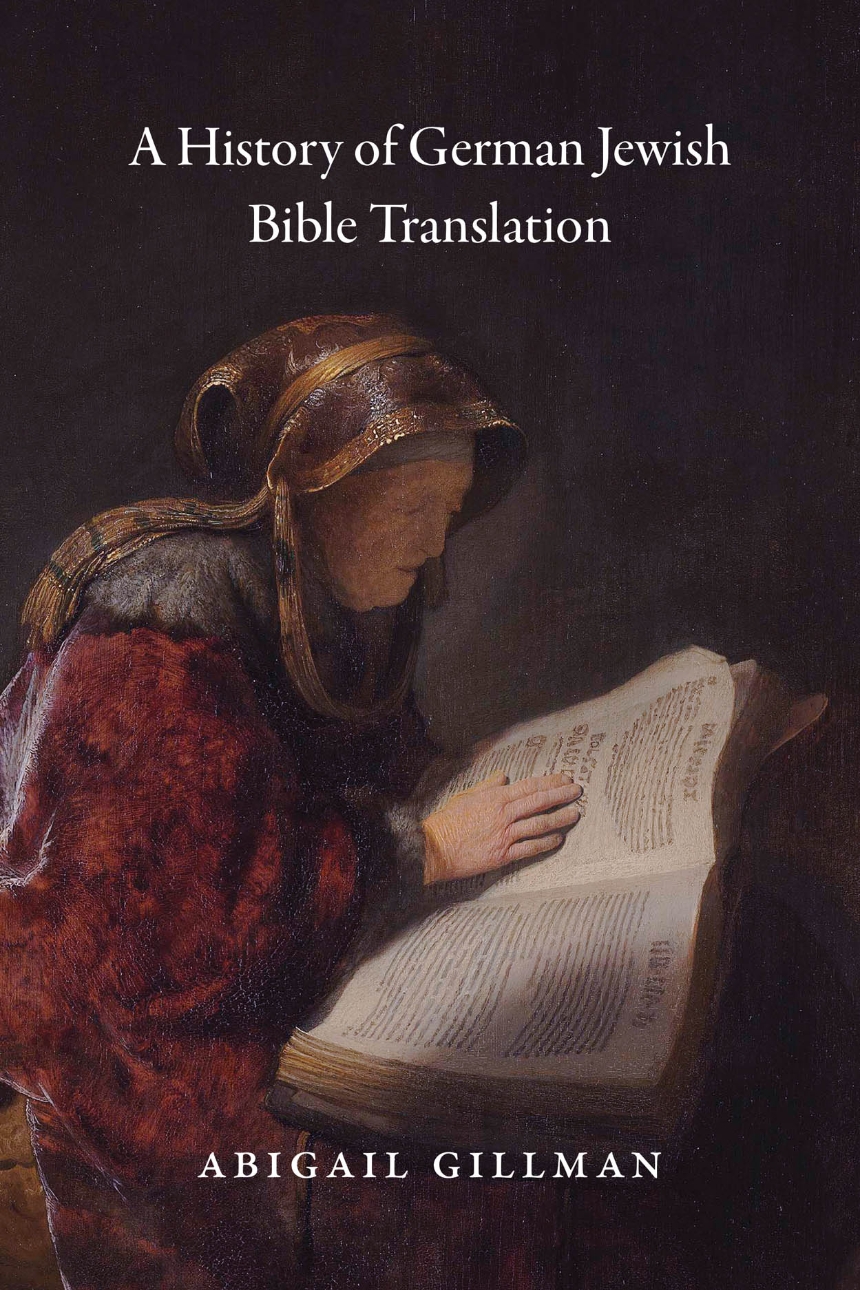A History of German Jewish Bible Translation
This book is the first in English to offer a close analysis of German Jewish translations as part of a larger cultural project. Looking at four distinct waves of translations, Abigail Gillman juxtaposes translations within each that sought to achieve similar goals through differing means. As she details the history of successive translations, we gain new insight into the opportunities and problems the Bible posed for different generations and gain a new perspective on modern German Jewish history.
320 pages | 31 halftones | 6 x 9 | © 2018
History: European History
Literature and Literary Criticism: Germanic Languages
Philosophy: Logic and Philosophy of Language
Religion: Judaism
Reviews
Table of Contents
Preface
List of Abbreviations
Introduction. The German Jewish Bible in Context
1. The First Wave: Jewish Enlightenment Bibles in Yiddish and German
Introduction: Translation Revolution
First Steps to Culture: Title Pages of Blitz and Witzenhausen Bibles (1678, 1679)
The Story of the Blitz and Witzenhausen Bibles
From Yiddish to German: A New Genealogy
First Impressions: Mendelssohn’s Page Layout
Mendelssohn’s First Steps: Translating Jehuda Halevi and Biblical Poetry
Mendelssohn’s Christian Contexts
Verse Comparisons: An Idiom in Formation
Excursus on Mendelssohn’s Commentary: Explaining the Ways of Language
Apologias: The Religious Mandate of the Modern Translator
Manifestos: The Jewish Translator as Modern Author
Conclusion: Reframing the Legacy
2. The Second Wave: Emergence of a Bible Industry
Introduction: That Red, Red Stuff
Contexts of the Second Wave
Moving Beyond Mendelssohn
The New Hebraism: The Bibles of Joseph Johlson and Leopold Zunz
Reception of the Johlson and Zunz Bibles
Gotthold Salomon’s Volks- und Schulbibel
Salomon Herxheimer’s Bible: A Be’ur for Jews and Christians
Legacies of the Second Wave
3. The Third Wave: The Bible as Gesamtkunstwerk
Introduction: Redesigning the German Jewish Bible
Contexts of the Third Wave
Philippson and Hirsch: Biographies
Philippson and Hirsch: Mission Statements
Philippson: Unifying the Hebrew Bible
Philippson: Picturing the National Story
Commentary of Philippson and Hirsch
Hirsch’s Phonetic System: Explaining the Bible from Within
Hirsch versus the Orthodox Bible Society
Philippson and Hirsch: Menorah
Legacies of the Third Wave
4. The Fourth Wave: Reimagining the German Jewish Bible
Introduction: Reframing the History
A Friendship in Letters: Buber and Pappenheim (1916–1936)
Educators with Many Pedagogies: Buber, Pappenheim, Rosenzweig
Rosenzweig and Jehuda Halevi: First Steps to Translation
Buber’s Creative Retellings
Luther and Torzcyner: Stepping-Stones of the Buber-Rosenzweig Bible
Pappenheim’s Yiddish Tanach
Excursus: The Tsene-Rene, Then and Now
Mission Statements: Bibles for People Today
Methodological Consensus in the Fourth Wave
Methodological Dissensus in the Fourth Wave
The Limits of Reimagination
Legacies of the Fourth Wave: A Female Moses and Jewish Luther
Epilogue: Ma shemo? The Name of God in the German Jewish Bible
Acknowledgments
Notes
Bibliography
Index
